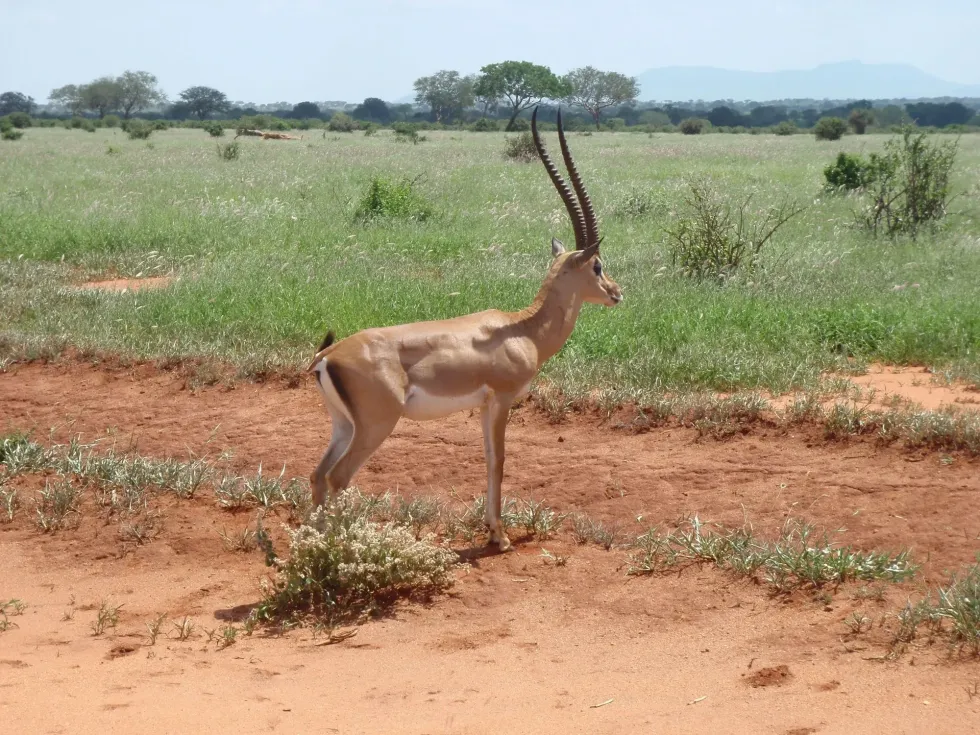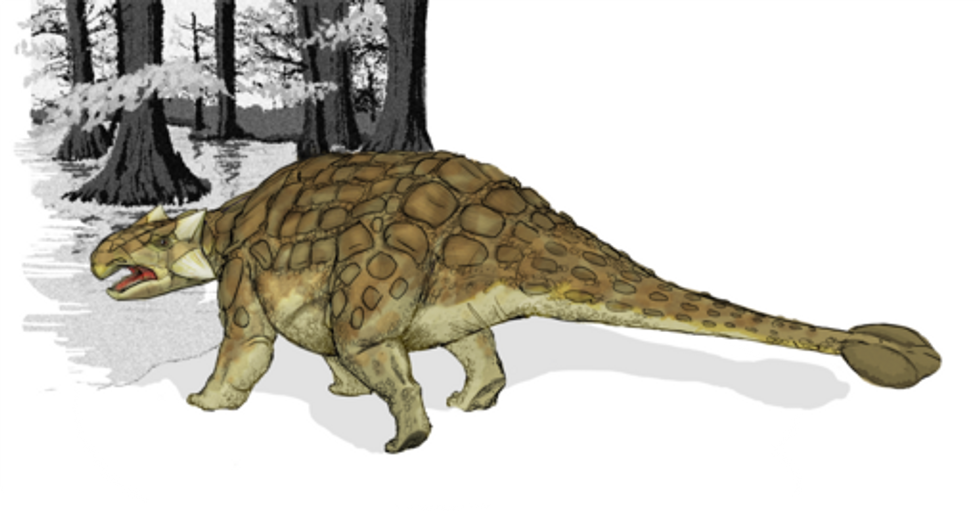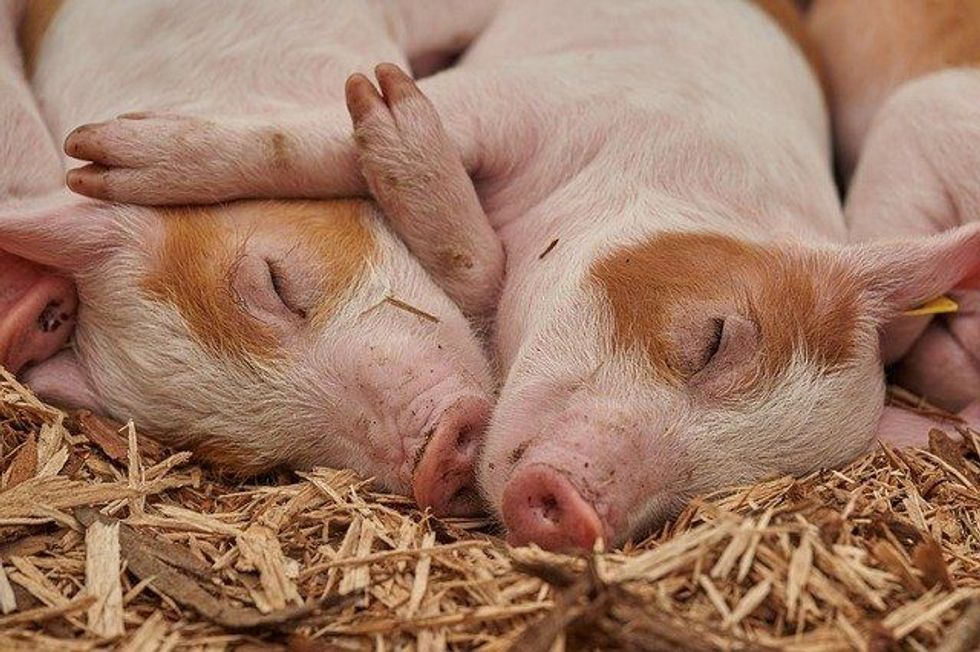The populations of the three gazelle species native to Saudi Arabia have been greatly reduced over the last few years. These species of gazelle were the mountain gazelle, the Saudi gazelle, and the sand gazelle (Gazella subgutturosa marica).
The mountain gazelle (Gazella Gazella Cora) lives in scattered distributions across the deserts of western Saudi Arabia, while the sand gazelle (Gazella subgutturosa marica) occurs only in the Nafud Desert of northern Saudi Arabia.
The Saudi gazelle, or the Gazella saudiya, which belonged to the Bovidae family and Gazella genus, is now an Extinct species. Their populations and range were common across the Arabian peninsula in Western Saudi Arabia, Kuwait, and parts of Yemen and Oman.
In 2008, this species was declared Extinct due to constant hunting in their native habitat by humans.
The Saudi gazelle (Gazella saudiya), along with Queen of Sheba's gazelle, are the only two gazelle species to have gone Extinct. Observed to have a light brownish color, these tan animals look like slender antelopes with their short muzzles.
This Gazella species has shorter legs compared to the African dorcas gazelle (Gazella dorcas). Both the male and the female gazelles have horns with the female's horns being relatively straighter and smaller in size.
Having a herbivorous diet, these animals are seen eating grass and plants, either alone or in small herds or groups.
The young gazelles are called calves. The breeding period usually takes place in April and May.
If you would like to learn more about similar animals like the Gazella saudiya, check out our saiga antelope or Chinese water deer facts!
Saudi Gazelle Interesting Facts
What type of animal is a Saudi gazelle?
The Saudi gazelle is an Extinct animal whose range used to occur in the northern and western Arabian peninsula. They belong to the Gazella genus and Bovidae family.
What class of animal does a Saudi gazelle belong to?
The Gazella saudiya belonged to the class Mammalia, though it is now Extinct due to excessive hunting.
How many Saudi gazelles are there in the world?
The population of this wild animal no longer exists anywhere in the world as they are now an extinct species. They used to be found in the north and central Arabian peninsula, with their range specifically located in Saudi Arabia, Jordan, Kuwait, Oman, and parts of Yemen.
Constant hunting for their horns and heads has made the Saudi gazelle extinct.
Where does a Saudi gazelle live?
The habitat of this gazelle species was found in hilly or gravel plains, mountains, and deserts. They often grazed in these habitats in small groups or herds of up to 20.
What is a Saudi gazelle's habitat?
As they are gazelles, these tan animals are seen to inhabit the arid lands of Asia from China to the north and central Arabian Peninsula, North Africa from the Saharan Desert to the sub-Saharan Sahel, and northeast Africa from the Horn of Africa to Tanzania.
They were also believed to have lived near the mountains and are a subspecies of the African Dorcas gazelle (G. dorcas).
Who does the Saudi gazelle live with?
The Saudi gazelle is sometimes found grazing alone or they could be in herds of up to 20. Sometimes the herd can be segregated by sex, especially during the mating season.
How long does a Saudi gazelle live?
It is not known how long a Saudi gazelle lived but considering the fact that it is a gazelle, they could have lived for about eight years in the wild and for about 12-15 years in captivity.
How do they reproduce?
The breeding system among these gazelle species is polygamous. This means that both the males and the females may mate with multiple partners.
The breeding months are usually in April and May, where the female gives birth to one or a maximum of two in each breeding season. The birth of the calf or fawn is said to occur in isolation.
When suckling begins, the mothers and their young join a small maternity herd. The juvenile males take about three years to reach their full size while the females take only 18 months!
What is their conservation status?
The conservation status of the Saudi gazelle, which belongs to the genus Gazella, has been declared Extinct by the IUCN as of 2008. Their populations do not exist anywhere in the world anymore.
The Saudi gazelle's populations were previously studied to be subspecies of a gazelle type called Dorcas gazelle (G. Dorcas), the reason why its slow decline and ultimate extinction hardly caught conservationists' attention.
Saudi Gazelle Fun Facts
What does the Saudi gazelle look like?
 *We've been unable to source an image of a Saudi gazelle and have used an image of a sand gazelle instead. If you are able to provide us with a royalty-free image of a Saudi gazelle, we would be happy to credit you. Please contact us at hello@kidadl.com.
*We've been unable to source an image of a Saudi gazelle and have used an image of a sand gazelle instead. If you are able to provide us with a royalty-free image of a Saudi gazelle, we would be happy to credit you. Please contact us at hello@kidadl.com.It is a small gazelle with a pale reddish coat that has more muted patterns than the mountain gazelle.
Both sexes typically have horns, although the females may have smaller, straighter ones or none at all. Seen as a subspecies to the African Dorcas gazelle (Gazella dorcas), the Saudi gazelle as compared to the African Dorcas gazelle has shorter legs and is much lighter in color.
They are swift wild animals, similar in speed to the sand gazelle (Gazella subgutturosa marica), and can escape easily when faced with a predator.
How cute are they?
This Gazella species, that are slightly similar to the mountain gazelle and sand gazelle species, are delicate and elegant to look at rather than cute given their plain brown coloring and white stripe markings. What makes them a sight to behold is when they are running because these wild gazelles are super fast and very agile.
How do they communicate?
Not much is known about the way this species of gazelle communicate. However, since they are part of the gazelle family, a Saudi gazelle would slowly sway its tail or tread heavily on its feet to signal other nearby gazelles of a prowling threat or predator.
How big is a Saudi gazelle?
The Saudi gazelle is the same size as that of a deer. They are about 22-26 in (55.8-66 cm) in height.
How fast can a Saudi gazelle run?
This species of gazelles can run exceptionally fast and are swift wild animals. They are able to run at bursts as high as 60 mph (96.5 kph) or run at a sustained speed of 30 mph (48.2 kph).
How much does a Saudi gazelle weigh?
The Saudi gazelle weighed about 30.8 lb (14 kg). Their lightness contributes to the fact that they are great sprinters, at times running like a cheetah but never outrunning them!
What are the male and female names of the species?
There are no specific male or female names for this species of gazelle. They are simply known as the Saudi gazelle, or scientifically, Gazella saudiya.
What would you call a baby Saudi gazelle?
Like all gazelles, the baby Saudi gazelle is known as a fawn or a calf. The juvenile males take about three years to reach their full size while the female takes only about 18 years.
What do they eat?
Known to have a herbivorous diet, these gazelles moved across hilly plains and deserts feeding on vegetation and small plants. They shared their diet with sheep, goats, and cattle.
Are they dangerous?
No, these gazelles were not dangerous. Nevertheless, they were prey animals to various predators so they are placed in constant danger.
Would they make a good pet?
The gazelle is a wild animal. Therefore, they won't make a good pet and it would be best to leave them in their natural habitat.
Did you know...
The name gazelle comes from the Arabic 'gazal', the term for love poems. Gazelles can also stand on their back legs to reach leaves high in the branches of trees.
Which city is called the land of gazelles?
Abu Dhabi, the capital of the United Arab Emirates (UAE), is called the 'land of gazelles'.
Are the Saudi gazelles extinct?
Yes, the slender Saudi gazelle has been Extinct since 2008 as they were continuously hunted by nomadic communities, tribes, and hunters for their meat, horns, hide, and head.
Here at Kidadl, we have carefully created lots of interesting family-friendly animal facts for everyone to discover! For more relatable content, check out these antelope facts and spiral-horned antelope facts for kids.
You can even occupy yourself at home by coloring in one of our free printable Saudi gazelle coloring pages.
*We've been unable to source an image of Saudi gazelle and have used an image of a gazelle instead. If you are able to provide us with a royalty-free image of Saudi gazelle, we would be happy to credit you. Please contact us at hello@kidadl.com.




 *We've been unable to source an image of a Saudi gazelle and have used an image of a sand gazelle instead. If you are able to provide us with a royalty-free image of a Saudi gazelle, we would be happy to credit you. Please contact us at hello@kidadl.com.
*We've been unable to source an image of a Saudi gazelle and have used an image of a sand gazelle instead. If you are able to provide us with a royalty-free image of a Saudi gazelle, we would be happy to credit you. Please contact us at hello@kidadl.com.




